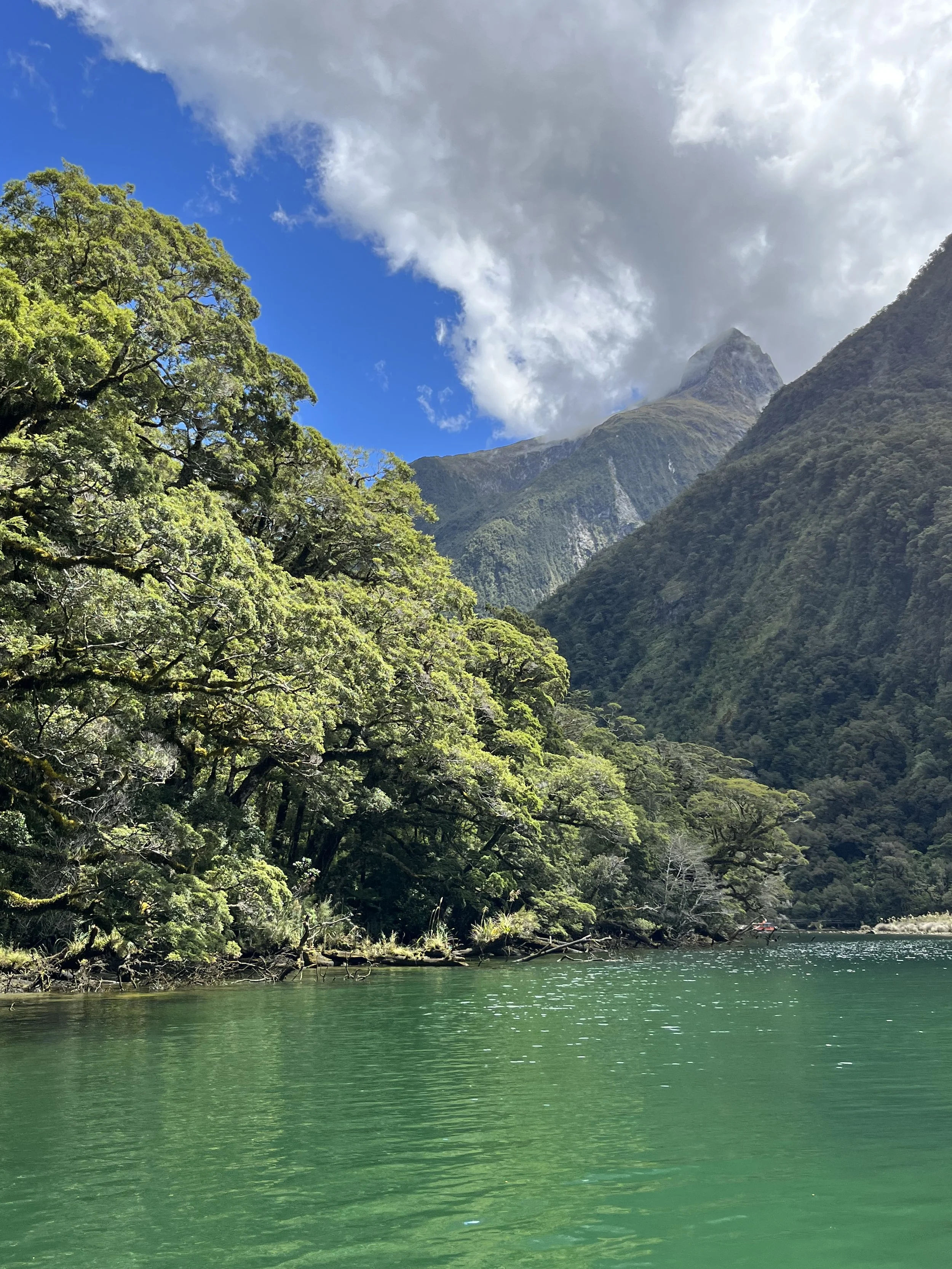The Hunt
The hunt starts by checking the tides. That decides when we go and how long we’ve got. Then we check the weather. No point heading out if it’s blowing up or visibility’s gone. Sometimes we’re launching before first light, mist still hanging low over the water. Other times it’s a late run, chasing the last of the tide with the sun dropping behind the peaks. Get it wrong and you’re either bogged in the shallows or the log’s just far enough underwater that you never even see it.
We work the edges: tucked-in bays, river mouths, the quiet corners where floodwater slows down and things start to collect. The bush comes right down to the water out here, so you’re scanning that thin line between rock and scrub, looking for anything that seems out of place. A dark shape in the reeds. A bit of bark sticking out. Some logs show themselves straight away. Others are half-buried or hidden under drift.
Frank’s skippering is a big part of it. He’s spent decades running boats through these waters, and just as long keeping an eye on the shoreline. He knows where things tend to collect, where the slips have been, and where it’s worth taking a closer look. Half the time we’re heading to a spot he’s clocked on a previous run.
Over time you build a pretty good mental map. Places where we’ve found good timber before. Spots that look like they should hold something, even if they don’t. Part memory, part instinct, part educated guess.
From a distance, some of them look like gold. Straight, long, clean lines. You pull in, get the rope ready, and jump ashore thinking you’ve struck it lucky. Then you dig into the bark and it crumbles in your hands. The end's soft, the grain’s gone. You might spend hours working it free before realising it’s not worth taking. It happens more than we’d like.
Then there are the quiet ones. Logs tucked into rock, silvered from the tide sliding in and out over years. You roll them over, check the weight, knock the ends. Frank’s always the one who figures it out. He’ll cut a corner back and give it a sniff. Rimu, matai, totara. Each one with its own smell, its own feel. If it checks out, that’s when the plan starts forming.
Some of the logs are fresh. Still wearing bark, not long off the hillside. Others have been sitting in the same spot for decades. The tide’s worked them smooth, polished them silver, but they’re still solid. Those are the ones we get most excited about. Old, dense, weathered timber that’s earned its story.
Once we find something worth taking, the real thinking starts. How do we get it out? Can we do it today? What do we need? Ropes, another set of hands? Occasionally the timing lines up and we can float it out straight away. Most of the time, we take a few photos, mark the spot, and head back to plan the next trip properly.
Because spotting it is just the start. Salvaging it is where the work begins.
